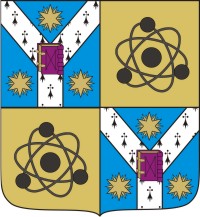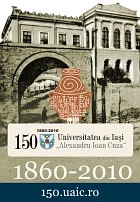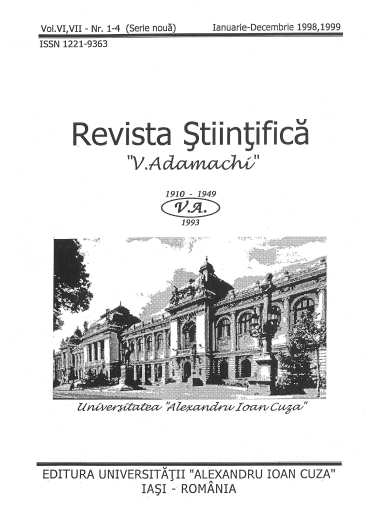 Facultatea de Fizică
Facultatea de Fizică
Universitatea "Al.I.Cuza" Iaşi
|
| Titlu: Radiation impact on the biosynthesis of vegetal pigments in wheat and barley |
| Autori: Cristina Elena Ionita1, Corina Antochi1, Diana Vrincianu1, Ramona Focea1, Dorina Creanga1, Mihaela Racuciu2, Cristian Goiceanu3 |
| Afiliere: 1Physics, University Alexandru Ioan Cuza, Iasi, Romania 2Science, University Lucian Blaga, Sibiu, Romania 3Non-ionizing radiation, Institute of Public Health, Iasi, Romania |
| Abstract: The study of low level radiation impact on the photosynthesis pigments was carried out considering both ionizing and non-ionizing radiations. Non-ionizing radiation exposure was accomplished using Helmholtz coil system supplied to 50Hz/220 V power source, the direct current being adjusted 1.5 A – which corresponds to about 8.0 mT magnetic field in coil system center. The ionizing radiation source was an electron accelerator system for radiation therapy working within the University Hospital Iasi, characterized by dose rate of 260.88cGy/ min. In both experiments the exposure time was equal to 30 minutes; in the case of electromagnetic field continuous exposure was carried out while in the case of X-ray, fractional irradiation was applied, with 5 minutes exposure alternating with 1 minute pause. The biological material was consistent with caryopses of barley (two varieties) and wheat (from selected genetic source) that were let to germinate in darkness, in controlled conditions of temperature prior the exposure to radiations. Ten days later the plant seedlings were analyzed for photosynthesis pigment assay. Chlorophylls and carotenes contents were assessed according to standard biochemical procedure based on spectrophotometric measurements in the visible range. Average values and standard deviations were used for graphical plots that were further discussed aiming to evidence the differences between exposed samples and control ones. The increase of chlorophyll A and B levels in the seedling tissue– with different percentage values compared to the control samples was evidenced in the wheat after exposure to 50 Hz electromagnetic field while the diminution of both chlorophyll type levels was revealed for barley samples; the results are qualitatively the same for total carotene content; however the ratio of chlorophyll A/B was found diminished in wheat as well as in barley seedlings suggesting photosynthesis process inhibition following the absorption of electromagnetic energy. Ionizing radiation impact resulted in evident stimulatory effect in the chlorophyll and carotene synthesis for both analyzed plant species; but the photosynthesis efficiency seems to be lowered also either in wheat and barley samples. The explanations related to the differences noticed between the exposed samples and controls were assigned to specific phenomena for ionizing radiations as well as for non-ionizing ones. In the case of ionizing radiation low doses the water radiolysis is supposed to be the main physical process that triggers the water peroxide generation and various other peroxidation reactions within the cytoplasm of the irradiated cells with consequences for the biosynthesis of biomolecules. Nevertheless the direct absorption of X-ray photons in the vegetal pigments could damage part of their structure resulting in total content assay. The electromagnetic exposure is known for various complex changes induced in the living bodies even in the case of very low frequency fields but no direct damage at the level of biomolecules are expected because of small energy provided by corresponding photons. Most hypotheses regarding biological effects are based on the indirect and probably delayed reactions triggered by the electromagnetic energy absorption in the cell with consequences on all metabolic pathways but observable only at the level of some biochemical and biological parameters. We presume also that low thermal effect was involved in the case of electric energy dissipation by means of coil system used for the electromagnetic exposure. Barnthouse, L. W., EFFECTS OF IONIZING RADIATION ON TERRESTRIAL PLANTS AND ANIMALS: A WORKSHOP REPORT, Environmental Sciences Division, ORNL/TM-13141, Publication No. 4494 Davies, MS, Effects of 60 Hz electromagnetic fields on early growth in three plant species and a replication of previous results, Bioelectromagnetics. 1996;17(2):154-61. |
Download link:
|
|
|



